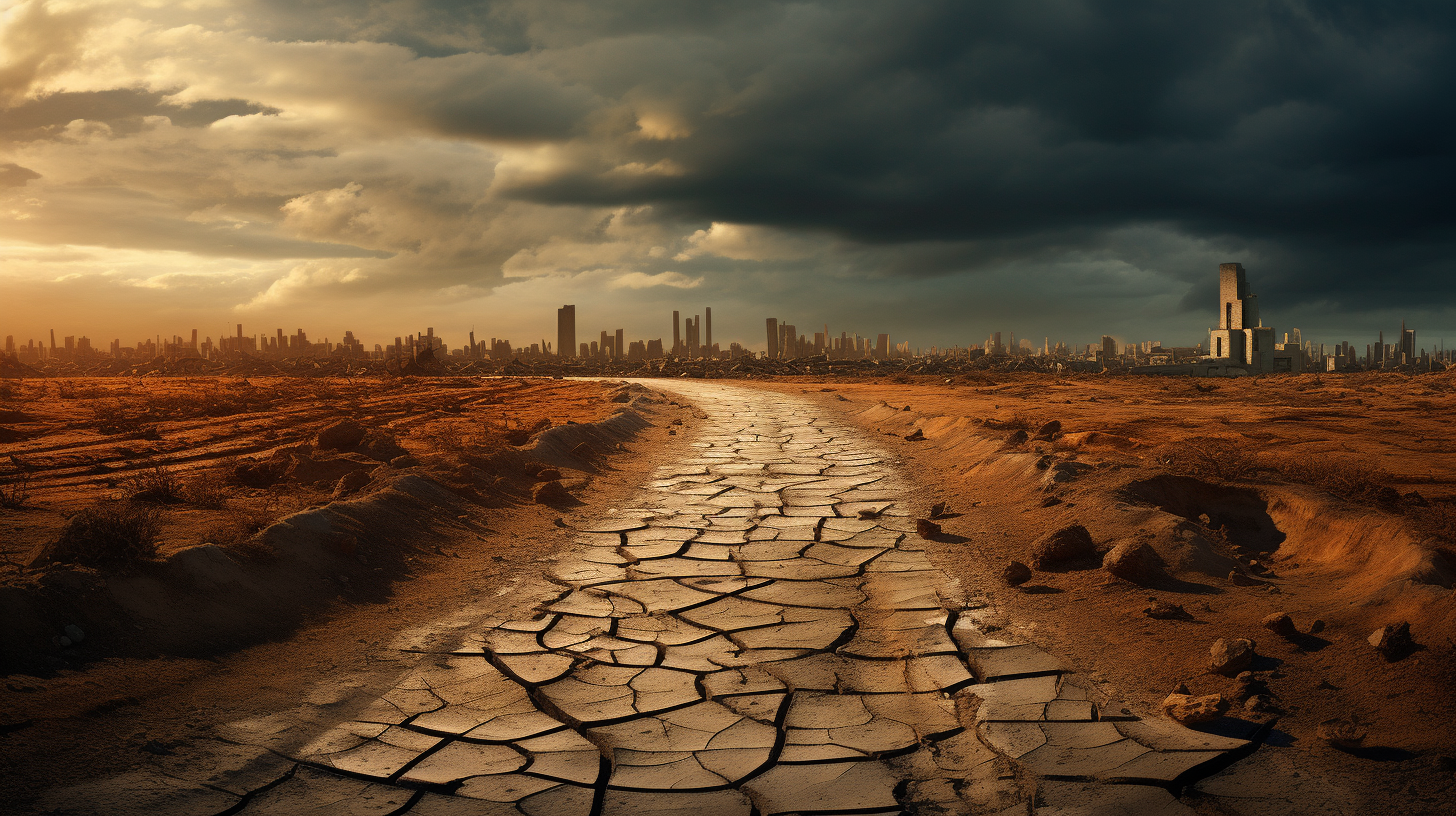Amidst a sky smeared with the soot of relentless wildfires and the incessant drumming of acid rain against the cracked asphalt, we traverse the landscape of our once-thriving transportation infrastructure, now reduced to abandoned relics in this climate dystopia. Our cities, once pulsating with the hum of engines and honks, lie in eerie silence, a sobering reminder of a world we turned our backs on.
In what some call civilization’s last chapter, Roads to Nowhere bears witness to the devastating impact of environmental neglect. We take a journey through the labyrinth of crumbling overpasses and deserted highways that stretch out like the decaying veins of the Earth, choked off by a cataclysm of our own making. Through this narrative, we uncover the crippling effects that climate change has wrought upon our global transport systems.
Envision once bustling ports, now ghostly harbors, their waters too volatile for ships to traverse, and air travel grounded indefinitely as freak storms and shifting jet streams render the skies treacherous. Global trade has ground to a halt, and the arteries of commerce are severed. The collapse of transport networks has instigated a domino effect of supply chain breakdowns and economic turbulence, spiraling entire populations into abject poverty.
As we rummage through the tangled steel of what used to be subways and metros, the eerie silence is telling. The transport network — an epitome of human ingenuity, a framework that not only connected disparate geographies but also ideas, cultures, and economies — stands annihilated not by external force but by the persistent ignorance and inaction towards ecological warnings.
The symbolism is profound as we travel through these neglected transits — these roads to nowhere are not merely the failure of infrastructure but the failure of foresight. Our gas-guzzling cars and carbon-belching planes have been immobilized, yet they persist as monuments to a period of reckless excess. These formidable machines, now entombed by the ever-advancing foliage, starkly contrast against a backdrop of ecological collapse, highlighting our frivolous gambles with the planet’s future.
The implications are chilling when one stares into the abandoned tunnels – a dark mirror reflecting the potential endpoint of our civilization’s trajectory; the transport end we are experiencing is not an abrupt stop, but a gradual deceleration precipitated by decades of ecological neglect. The few survivors who navigate these paths on foot are beset by the feral resurgence of nature reclaiming its territory, an ironic renaissance borne from the ruins of a once hyper-connected world.
One might ponder, as the resilient weeds split through the concrete — what are the lessons to be extracted from these roads to nowhere? The voracious consumption of fossil fuels, the pollution of airways, and the squandering of resources appear not merely as policy missteps but as a collective hallucination of infinite growth on a finite planet.
As the physical pathways of our world disintegrate, so too does the very concept of progress. But in this haunting tableau, we grasp the harsh truth: the roads we have forged led us precisely to the present desolation. And now, the journey must be inward — contemplating not the distance travelled, but the destination at which we have arrived.
So we ask ourselves, in the reflection of these roads to nowhere, could this have been prevented? Does the road have an end, or does it simply fade into the abyss, a cautionary tale etched into the annals of history?
Perhaps our journey on this planet was always destined to be ephemeral, and in the grand saga of Earth, we are merely a fleeting chapter. Nonetheless, the message is clear: our transportation tale is not merely about the end of transit, but the end of an era — a dire warning to anyone who dares to look upon these roads to nowhere and not see the reflections of their own neglect.
